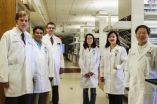(Press-News.org) A study led by researchers at the UC San Diego Stem Cell Research program and funded by the California Institute for Regenerative Medicine (CIRM) looks at an important RNA binding protein called LIN28, which is implicated in pluripotency and reprogramming as well as in cancer and other diseases. According to the researchers, their study – published in the September 6 online issue of Molecular Cell – will change how scientists view this protein and its impact on human disease.
Studying embryonic stem cells and somatic cells stably expressing LIN28, the researchers defined discrete binding sites of LIN28 in 25 percent of human transcripts. In addition, splicing-sensitive microarrays demonstrated that LIN28 expression causes widespread downstream alternative splicing changes –variations in gene products that can result in cancer or other diseases.
"Surprisingly, we discovered that LIN28 not only binds to the non-coding microRNAs, but can also bind directly to thousands of messenger RNAs," said first author Melissa Wilbert, a doctoral student in the UC San Diego Biomedical Sciences graduate program.
Messenger RNA or mRNA, are RNA molecules that encode a chemical "blueprint" for the synthesis of a protein. MicroRNAs (miRNAs) are short snippets of RNA that are crucial regulators of cell growth, differentiation, and death. While they don't encode for proteins, miRNAs are important for regulating protein production in the cell by repressing or "turning off" genes.
"The LIN28 protein is linked to growth and development and is important very early in human development," said principal investigator Gene Yeo, PhD, MBA, of the Department of Cellular and Molecular Medicine, the Stem Cell Research Program and the Institute for Genomic Medicine at UC San Diego. "It is usually turned off in adult tissue, but can be reactivated, for instance, in certain cancers or metabolic disorders, such as obesity."
Using genome-wide biochemical methods to look at the set of all RNA molecules across the transcriptome, the researchers found that LIN28 recognizes and binds to a known hairpin-like structure found on the let-7 family of miRNA, but surprisingly, this same structure is also found on mRNAs, allowing LIN28 to directly regulate thousands of targets.
"One of these targets actually encodes for the LIN28 protein itself. In other words, LIN28 helps to make more of itself," said Yeo. This process, known as autoregulation, helps to maintain a so-called "steady-state" system in which a protein positively regulates its own production by binding to a regulatory element of the mRNA for the gene coding it.
"Since these mRNA targets include those known to be involved in gene splicing, we also implicate LIN28 in the regulation of alternative splicing," said Wilbert, adding that abnormal variations in splicing are often implicated in cancer and other disorders.
In the splicing process, fragments that do not typically code for protein, called introns, are removed from gene transcripts, and the remaining sequences, called exons, are reconnected. The splicing factor proteins themselves, as well as the location where these proteins bind, dictate which pieces of the RNA are included or excluded in the final gene transcript – in much the same way that removing and inserting scenes, or splicing, can alter the plot of a movie.
The discovery of thousands of precise binding sites for LIN28 within human genes offers a novel look at the role this protein plays in development and disease processes. For example, scientists had looked at targeting a particular miRNA called let-7 to halt cancer growth. "But we now see that LIN28 can, in essence, bypass let-7 and find many, many other binding sites – perhaps with the same adverse effect of uncontrolled cell overgrowth," said Yeo. "This suggests that LIN28 itself should be the therapeutic target for diseases, rather than let-7 or other miRNAs."
INFORMATION:
Additional contributors to the study include, Stephanie C. Huelga, Katannya Kapeli, Thomas J. Stark, Tiffany Y. Liang, Stella X. Chen, Bernice Y. Yan, Jason L. Nathanson, Kasey R. Hutt, Michael T. Lovci, and Anthony Q. Vu, UC San Diego; Hilal Kazan and Quaid Morris, University of Toronto; Katlin B. Massirer, UC San Diego and State University of Campinas, Brazil; and Shawn Hoon, A*Star and National University of Singapore.
This study was supported in part by the National Institutes of Health (HG004659, GM084317 and NS075449), the National Institute of General Medical Sciences (T32 GM008666), and the California Institute for Regenerative Medicine (RB1-01413).
Binding sites for LIN28 protein found in thousands of human genes
Protein expression also causes changes in gene splicing
2012-09-04
ELSE PRESS RELEASES FROM THIS DATE:
Spinach power gets a big boost
2012-09-04
An interdisciplinary team of researchers at Vanderbilt University have developed a way to combine the photosynthetic protein that converts light into electrochemical energy in spinach with silicon, the material used in solar cells, in a fashion that produces substantially more electrical current than has been reported by previous "biohybrid" solar cells.
The research was reported online on Sep. 4 in the journal Advanced Materials and Vanderbilt has applied for a patent on the combination.
"This combination produces current levels almost 1,000 times higher than we were ...
New study shows promise in using RNA nanotechnology to treat cancers and viral infections
2012-09-04
LEXINGTON, Ky. (Sept. 4, 2012) — A new study by University of Kentucky researchers shows promise for developing ultrastable RNA nanoparticles that may help treat cancer and viral infections by regulating cell function and binding to cancers without harming surrounding tissue.
The study, published in Nano Today, was carried out in the laboratory of Peixuan Guo, the William S. Farish Endowed Chair in Nanobiotechnology at the UK Markey Cancer Center, in collaboration with Dr. Mark Evers, director of the UK Markey Cancer Center.
The study uses RNA (ribonucleic acid) as ...
Sleep apnoea linked with increased risk of cancer death
2012-09-04
Vienna, Austria: Sleep apnoea severity has been associated with increased cancer mortality in a new study.
The research, which will be presented today (Tuesday 4 September 2012) at the European Respiratory Society's (ERS) Annual Congress in Vienna, adds to evidence presented earlier this year highlighting a link between severe sleep apnoea and cancer.
Two further studies presented at the ERS Congress, also show evidence suggesting an increase in cancer incidence among sleep apnoea patients and an association between the spread of cancer and sleep apnoea.
In the first ...
Smoking and natural disasters: Christchurch residents increase tobacco consumption post-earthquake
2012-09-04
Vienna, Austria: The prevalence of smoking in Christchurch, New Zealand, increased following the 2010 earthquake, according to a new study.
The results of the study will be presented today (4 September 2012) at the European Respiratory Society's Annual Congress in Vienna.
The 7.1-magnitude Christchurch earthquake, and subsequent aftershocks, have caused a huge amount of damage and dramatically changed the social, working and living conditions for residents in the city.
To investigate the effects of the disaster on smoking levels, researchers from the Canterbury ...
Increase in respiratory symptoms following volcanic eruption
2012-09-04
Vienna, Austria: Exposure to volcanic ash can increase respiratory symptoms such as an extreme cough, or phlegm, according to a new study.
The research, which will be presented today (4 September 2012) at the European Respiratory Society's Annual Congress in Vienna, investigated the effects of living close to the Icelandic Volcano, Eyjafjallajökull.
Eyjafjallajökull erupted in April 2010 and created a huge ash cloud which spread across Europe, causing widespread disruption to air travel on the continent.
Researchers from the University of Iceland have now examined ...
Deadly witch hunts targeted by grassroots women's groups
2012-09-04
EAST LANSING, Mich. — Witch hunts are common and sometimes deadly in the tea plantations of Jalpaiguri, India. But a surprising source – small groups of women who meet through a government loan program – has achieved some success in preventing the longstanding practice, a Michigan State University sociologist found.
Soma Chaudhuri spent seven months studying witch hunts in her native India and discovered that the economic self-help groups have made it part of their agenda to defend their fellow plantation workers against the hunts.
"It's a grassroots movement and it's ...
New genetic clues to why most bone marrow transplant patients develop graft-versus-host disease
2012-09-04
SEATTLE – A team of scientists led by a bone marrow transplant researcher at Fred Hutchinson Cancer Research Center has shed new light on why most bone marrow transplant patients who receive tissue-matched cells from unrelated donors still suffer acute graft-versus-host disease (GVHD). The answer appears to lie in the discovery of previously undetected genetic differences in the DNA of patients and unrelated marrow donors.
The laboratory-based study findings by Effie Petersdorf, M.D., and colleagues soon will be translated to the clinic when a Hutchinson Center transplant ...
Magazine articles jeopardize and empower young women’s sexuality
2012-09-04
Los Angeles, CA (September 4, 2012) While the effects of sexualized media on young women has long been debated, a new study finds that women who read sex-related magazine articles from popular women's magazines like Cosmopolitan are less likely to view premarital sex as a risky behavior. Additionally, the women who are exposed to these articles are more supportive of sexual behavior that both empowers women and prioritizes their own sexual pleasure. This study was published in a recent article from Psychology of Women Quarterly (published by SAGE).
Study authors Janna ...
Using magnetism to understand superconductivity
2012-09-04
Might it one day be possible to transmit electricity from an offshore wind turbine to land-based users without any loss of current? Materials known as "high temperature" superconductors (even though they must be maintained at -140°C!), which can conduct electricity without any losses, were supposed to make this dream a reality. But over the past twenty-five years, scientists have not been able to make any progress in this area. Research being done in EPFL's Laboratory for Quantum Magnetism (LQM) could change that. Their study of magnetism at extremely small scales could ...
Hormone therapy for fruit flies means better pest control
2012-09-04
Released en masse, sterile Mexican fruit flies can undermine a wild population of the fruit-damaging pests so that fewer applications of insecticide are needed. But the irradiation used to sterilize the flies weakens them, hindering their ability to outcompete wild-type males for female mates.
Now, U.S. Department of Agriculture (USDA) and collaborating scientists have devised a hormone therapy for making sterile flies "more macho," improving their chances of mating with female flies before their wild rivals do. Peter Teal, a chemist with USDA's Agricultural Research ...
LAST 30 PRESS RELEASES:
Making lighter work of calculating fluid and heat flow
Normalizing blood sugar can halve heart attack risk
Lowering blood sugar cuts heart attack risk in people with prediabetes
Study links genetic variants to risk of blinding eye disease in premature infants
Non-opioid ‘pain sponge’ therapy halts cartilage degeneration and relieves chronic pain
AI can pick up cultural values by mimicking how kids learn
China’s ecological redlines offer fast track to 30 x 30 global conservation goal
Invisible indoor threats: emerging household contaminants and their growing risks to human health
Adding antibody treatment to chemo boosts outcomes for children with rare cancer
Germline pathogenic variants among women without a history of breast cancer
Tanning beds triple melanoma risk, potentially causing broad DNA damage
Unique bond identified as key to viral infection speed
Indoor tanning makes youthful skin much older on a genetic level
Mouse model sheds new light on the causes and potential solutions to human GI problems linked to muscular dystrophy
The Journal of Nuclear Medicine ahead-of-print tip sheet: December 12, 2025
Smarter tools for peering into the microscopic world
Applications open for funding to conduct research in the Kinsey Institute archives
Global measure underestimates the severity of food insecurity
Child survivors of critical illness are missing out on timely follow up care
Risk-based vs annual breast cancer screening / the WISDOM randomized clinical trial
University of Toronto launches Electric Vehicle Innovation Ontario to accelerate advanced EV technologies and build Canada’s innovation advantage
Early relapse predicts poor outcomes in aggressive blood cancer
American College of Lifestyle Medicine applauds two CMS models aligned with lifestyle medicine practice and reimbursement
Clinical trial finds cannabis use not a barrier to quitting nicotine vaping
Supplemental nutrition assistance program policies and food insecurity
Switching immune cells to “night mode” could limit damage after a heart attack, study suggests
URI-based Global RIghts Project report spotlights continued troubling trends in worldwide inhumane treatment
Neutrophils are less aggressive at night, explaining why nighttime heart attacks cause less damage than daytime events
Menopausal hormone therapy may not pose breast cancer risk for women with BRCA mutations
Mobile health tool may improve quality of life for adolescent and young adult breast cancer survivors
[Press-News.org] Binding sites for LIN28 protein found in thousands of human genesProtein expression also causes changes in gene splicing



